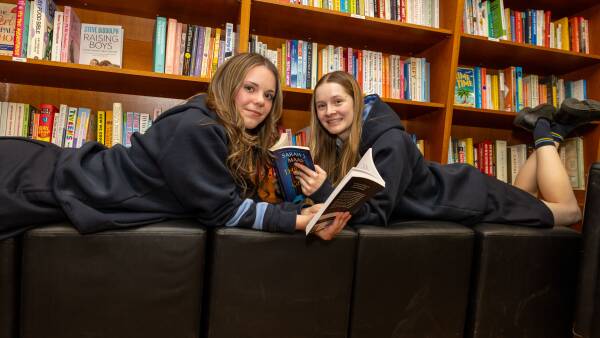
In an era dominated by digital screens, young readers like Bella Watson and Ava O’Donnell are forging their own paths in literature. At just 17, Bella is engrossed in George R.R. Martin’s A Song of Ice and Fire, while her friend Ava has recently explored Plato’s Republic and other classics. Both teenagers assert that they can successfully balance reading with their online activities, countering the prevalent concern about excessive screen time among youth.
Bella’s mother permits her to read the graphic novels but restricts her from watching the television adaptation until she turns 18. Despite this, Bella expresses that reading offers her just as much excitement. “I feel like when you get out of school, it’s less toxic,” she says, noting that social media’s grip on her life has loosened as she approaches adulthood. Ava echoes this sentiment, emphasizing that their school fosters a reading culture, which she finds increasingly appealing.
Ava’s mother, Tayanah O’Donnell, recently became the owner of Paperchain Bookstore, Canberra’s oldest independent bookstore, established in 1982. She observes a growing interest among teenagers in connecting with literature in person and believes that social media plays a paradoxical role in this trend. “Social media is kind of responsible for that,” she states, referencing platforms like BookTok and Bookstagram that encourage young people to gather and discuss literature.
Encouraging Young Readers in a Digital World
A report from Deakin University highlights the ongoing debate surrounding young people’s reading habits. Released in 2022, the *Discovering A Good Read* report surveyed around 12,000 Australian teens across several states, revealing that while 54 percent read more than once a week, nearly 30 percent do not read at all during their leisure time. The report urges an “urgent need for engaging strategies to foster a reading culture in the digital age.”
Peter Arnaudo, owner of The Book Cow in Kingston, underscores the importance of accessibility in promoting reading among teens. He suggests that parents should model good reading habits by having books readily available and openly engaging with literature themselves. “It’s about giving young people agency,” he states, advocating for a flexible approach to reading that allows teens to explore their interests without rigid expectations.
Arnaudo hosts events for young readers and local author workshops, noting that teens often simply need encouragement to discover literature. He emphasizes the diversity of reading preferences, with many young people showing a keen interest in non-fiction topics, which are often overlooked in discussions about youth reading trends.
The Role of Authors in Captivating Young Minds
Acclaimed author Andy Griffiths, known for his humorous and engaging books for children, acknowledges the challenge of capturing attention in a world filled with distractions. “I had to bring my very best A game to the table,” he explains, highlighting the need for modern storytelling that resonates with today’s youth. His books have evolved to include more illustrations to cater to an increasingly visual generation.
Griffiths believes that the key to maintaining children’s interest lies in creating layered narratives that encourage engagement. He also emphasizes the role of adults in helping children find a balance between screen time and reading, suggesting that parents should allow for moments of boredom that can lead to exploration of literature.
Similarly, author Craig Silvey, known for his novel *Jasper Jones*, posits that meaningful literature should be shared within families. He advocates for books that invite collective reading experiences, fostering connections among family members. “It’s vital that we provide meaningful literature for younger people,” Silvey asserts, emphasizing the enriching qualities of books.
As the Canberra Writers Festival approaches on October 26, both Griffiths and Silvey will participate in discussions aimed at promoting literature among young audiences. Their involvement underscores the significance of creating engaging narratives and encouraging a culture of reading that thrives alongside digital advancements.
Ultimately, the experiences of Bella, Ava, and other young readers demonstrate that despite the challenges posed by digital distractions, a deep appreciation for literature continues to flourish among teenagers. With supportive environments and accessible resources, the path for future generations of readers seems promising.






